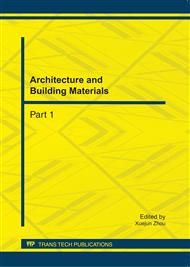p.928
p.934
p.939
p.944
p.948
p.955
p.960
p.965
p.972
Mechanical Properties on Thermosetting Epoxy Asphalt Waterproof Bond Material for Cement Concrete Pavement Based on Composite Structures
Abstract:
One of the important methods to ensure the durability of cement concrete pavement is utilizing excellent waterproof bond layer. Firstly, based on the mechanism of strength of the thermosetting epoxy asphalt waterproof bond material (EAWBM), the construction temperature which is strictly controlled above 130°C, is insured. Then the amount, the curing time and temperature of the thermosetting epoxy asphalt, are studied as the influencing factors of mechanical properties based on the composite structures of the concrete cement pavement. Finally, through the three-point bending fatigue test of composite structures, the fatigue durability of different waterproof bond material is compared. The results show that: the optimal amount of the thermosetting epoxy asphalt is 0.60~0.80L/m2; the asphalt concrete paving must be carried out within 24~32h after the EAWBM is constructed; the mechanical properties of the material decreases as the increasing test temperature; the waterproof bond materials have greater impact on the fatigue durability for the composite structures of the concrete cement pavement compared with the paving material, and the fatigue durability of the EAWBM is the optimal selection for cement concrete pavement.
Info:
Periodical:
Pages:
948-954
Citation:
Online since:
September 2011
Authors:
Price:
Сopyright:
© 2011 Trans Tech Publications Ltd. All Rights Reserved
Share:
Citation:


